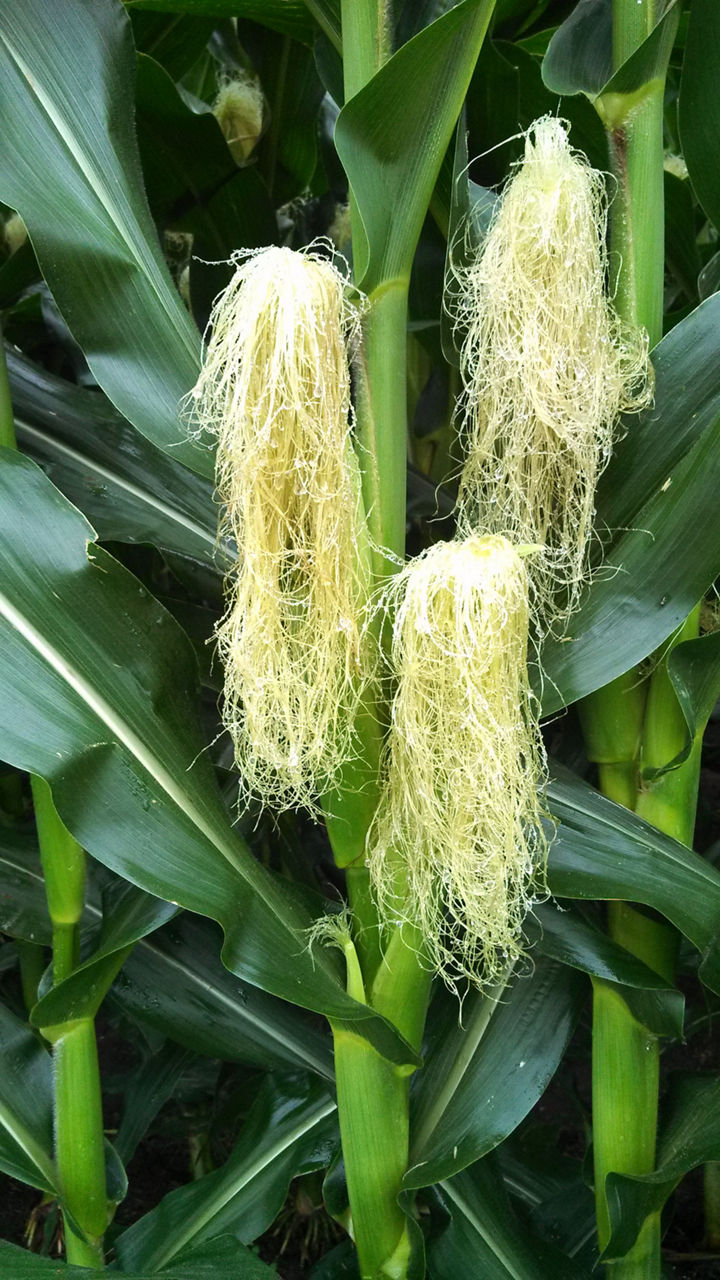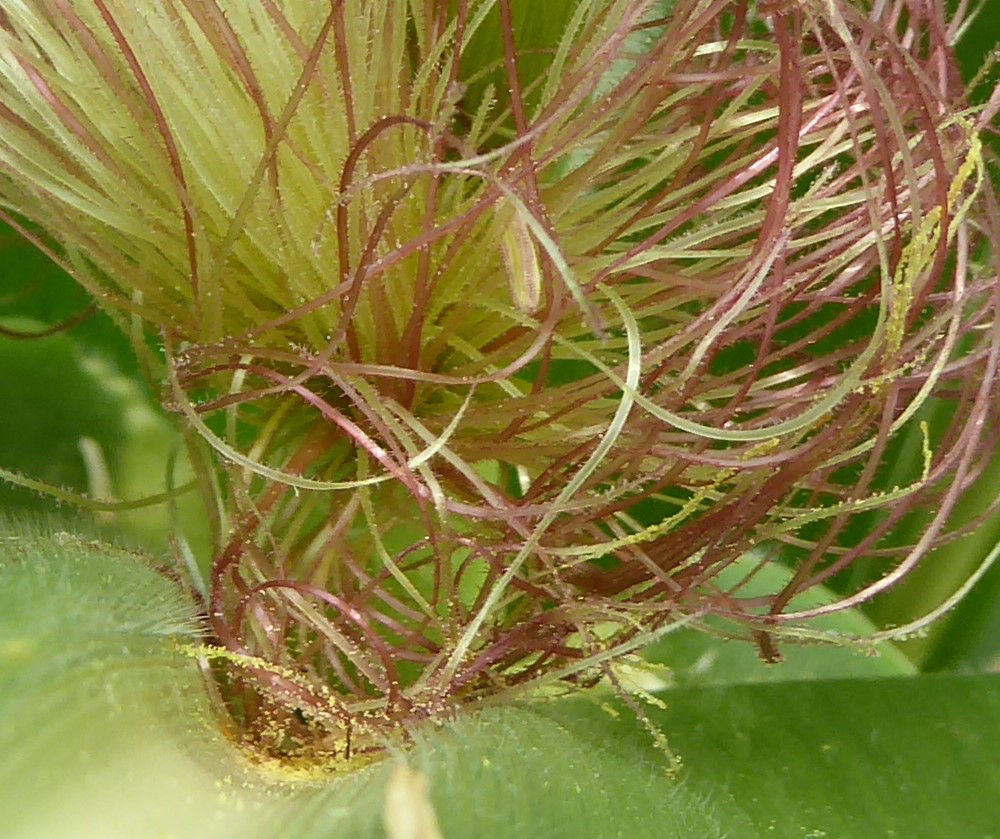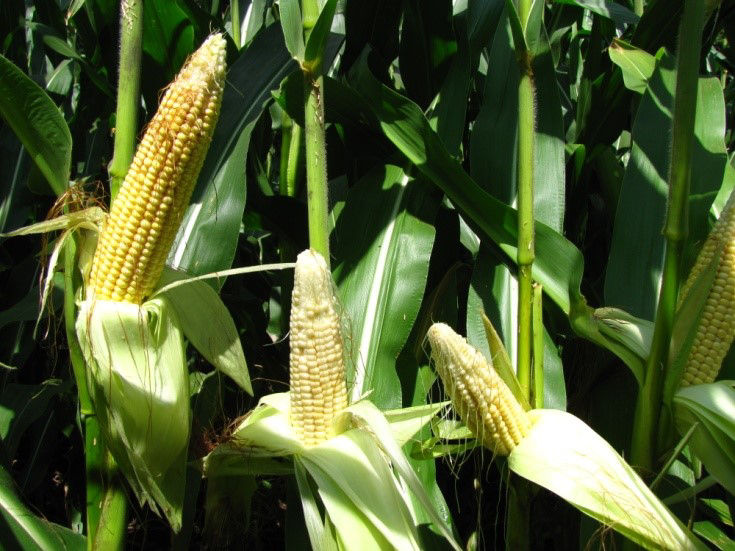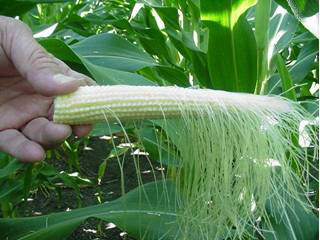Hey Ear, Why the Long Silks?
July 2, 2025
Have you ever walked into a corn field at pollination time and seen an ear with extra-long silks and wondered why (Figure 1)? Pollination of a corn ear is an interesting process, and it all starts with pollen shed. Pollen shed begins around 2 to 4 days after tassel emergence and generally continues for 5 to 8 days. Most pollen shed occurs between mid-morning and noon and the tassels do not shed pollen when they are wet, so they release pollen after a morning dew dries. The silks usually appear 1 to 2 days after pollen shed begins with the silks from the butt of the ear emerging first and those from the tip emerging last. Silks grow very fast and can grow from 1 to 1 ½ inches per day and continue to grow until they are fertilized. In general, it takes 2 to 3 days for all the silks on an ear to be exposed and pollinated by individual pollen grains. In general, corn pollen is fairly heavy in the pollen world and doesn’t move very far. Under normal field conditions, 97 percent or more of the kernels on a given plant are fertilized by pollen from a few surrounding plants rather than from its own pollen. Pollen shed is also not a continuous process. Pollen shed stops when the tassel is either too wet or too dry and starts again when moisture and temperature conditions are favorable. A normal sized ear can have 650 to 1000 ovules or potential kernels. Each tassel produces about 2 million to 5 million pollen grains, which translates into 2000 to 5000 pollen grains per individual silk. The corn plant over produces pollen to help assure complete pollen capture by the ear silks on the plant.

So, what happens after a pollen grain lands on a silk? Corn silks are very hairy as seen under a microscope and pollen grains are easily captured and held once the pollen starts falling (Figure 2). After capture, the pollen grain “germinates”, and starts growing a tube down the silk to its attached ovule (kernel). It takes about 24 hours for the pollen tube to grow the length of the silk to fertilize the ovule with its genetic material. After fertilization, the silk has done its job, it detaches from the kernel and begins to dry up and turn brown.

Now back to our original question, why the long silks? If a silk is unable to capture a pollen grain, it does not detach from the kernel, and continues to grow and grow, and an ear with very long silks develops while it waits for pollen capture. Why would this happen? Usually, environmental factors are a primary cause of a corn plant “missing the nick” (the coordinated emerging of silks timed with pollen shed). In drought or other stress conditions, pollen shed can occur quickly and occurs in 2 to 3 days instead of 5 to 8 days, and by the time the silks at the tip of the ear emerge and are ready to receive pollen, there is no pollen left. Also, under very dry conditions, the silks which are high in moisture, can dry rapidly and may not contain enough moisture to support pollen grain germination and pollen tube growth. When these situations occur, blank ear tips, half and ear, or even just scattered kernels on the cob at harvest time can be found (Figure 3).

For those not willing to wait until later in the season to see if the ear has pollinated, the “ear shake” method to determine which ovules are fertilized and which are not can be used (Figure 4). As indicated earlier, it takes about 24 hours for the pollen tube to grow down the length of the silk to fertilize the ovule. Shortly after the ovule is successfully fertilized, the silk detaches from the ovule. To check for successful pollination, simply and very carefully remove the husks one at a time from the ear and then, holding the ear tip down, gently give the ear a shake. The silks easily fall away from fertilized ovules (kernels) but remain attached to those yet to be fertilized. Many times, a few silks may remain attached at the tip of the ear, which is very common, and many farmers and agronomists refer to this as “nose back”.

Jeff Hinen
Channel Agronomist
1110_603050